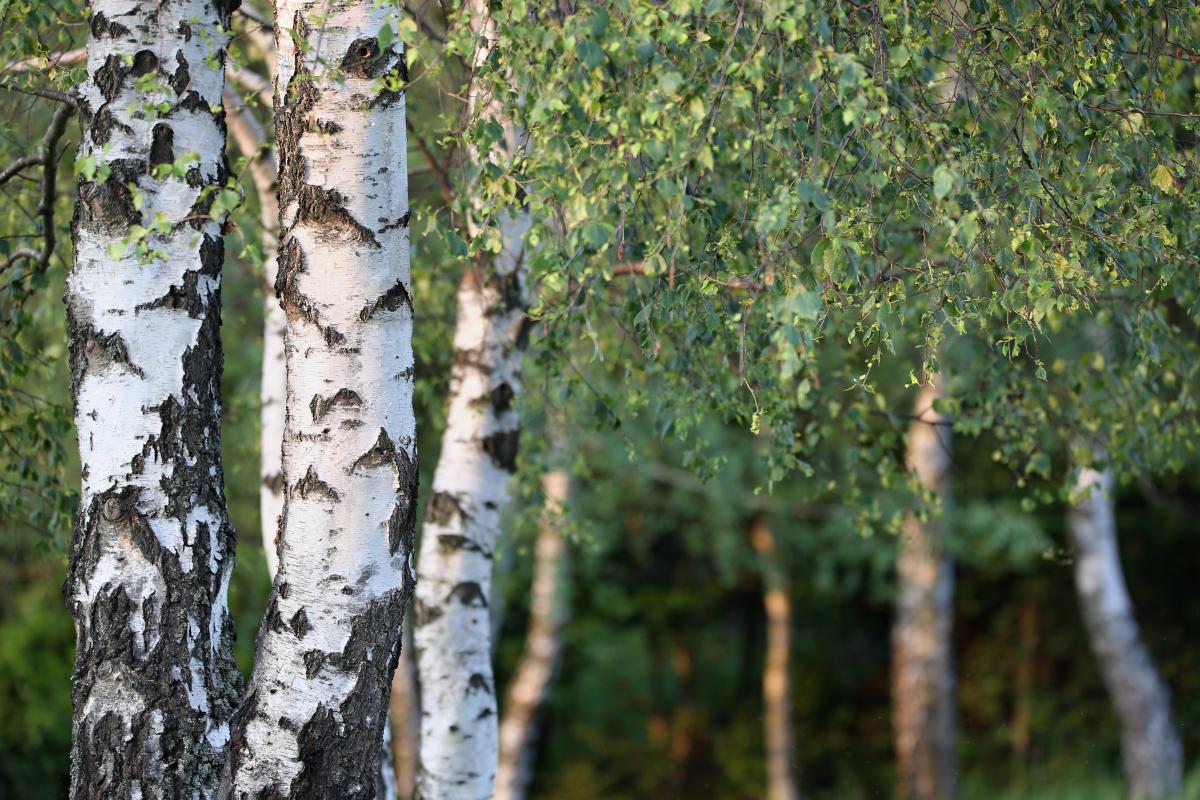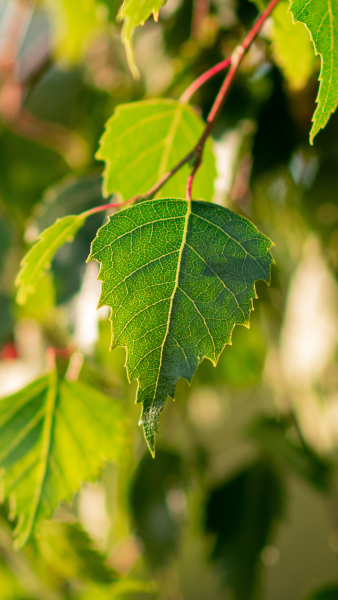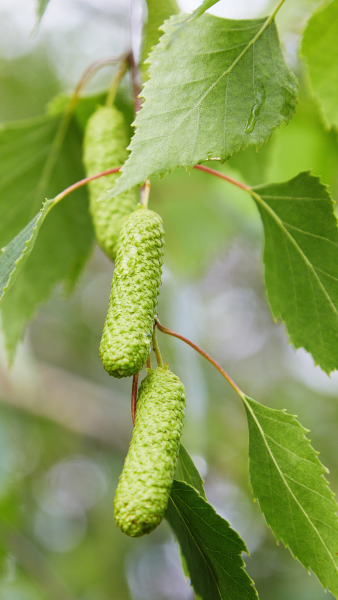
Species Name: Betula pendula
The silver birch, presumably named because of its bright white bark, can grow 15 - 25 metres in height and live for around 100 years. It is a hardy, light-demanding tree found all over Europe, from Scandinavia in the North, Russia in the East, and the British Isles in the West.
The most identifying feature is the bright white bark which comes off in thin ‘paper’ slices. The bark of a younger tree starts a dark purple/brown colour which, after a few years, turns orange and then finally white.

Birch leaves are fairly small (3-7cm) and triangular, with a rounded bottom and serrated edge. In the spring and summer, the leaves are a bright green colour. During the autumn, the leaves turn wonderful shades of yellow, orange and red before falling off in winter.

Seeds are packed into little pods called 'catkins'. These seeds are so small (1-2mm) that the wind disperses them and can carry them up to one mile from the parent tree.

Silver Birch trees are called pioneer species because they will grow on almost any kind of land. They can be found established in areas of poor site and soil conditions/nutrition and low biodiversity such as clear-fell sites and ex-agricultural land.
Young birch can be seen all throughout the Forest, and there are a lot of older trees located at Morgrove Coppice.
In Sanskrit, the name birch means a tree whose bark is used for writing. The Celts, Pagans and Druids saw it as a holy tree, with powers of purification and renewal, hence its use in New Year rituals.
In the past, birch sap was considered to be a medicine, having diuretic and antiseptic properties. The bark was thought to alleviate muscle pain, while the sap was used to treat skin disorders, and brewed into ale or wine.
Historically, the bark was used for tanning. The thin ‘paper-like’ sheets of bark that peel off young wood contain a waxy resin that is easy to ignite even when wet. When heated and cooled, the resin was collected to make an excellent waterproof glue.
As this tree is deemed a pioneer species, it is normally the first to be seen in sites which are being regenerated, like ex-agricultural land. The tree has nitrogen fixing nodules on its roots, which help nutrify the soil, and “prepare it” for any future plants or trees. The larvae of a large number of species of butterflies, moths and other insects feed on the leaves and other parts of the silver birch. In Germany, almost 500 species of insect have been found on silver and downy birch including 106 beetles and 105 lepidopterans, with 133 insect species feeding almost exclusively on birch.
Young silver birch shoots are often covered in little white warts, giving it the nickname 'warty birch'.
The birch is the national tree of Finland.
15% of the trees we are planting in the Forest this season are silver birch trees.




